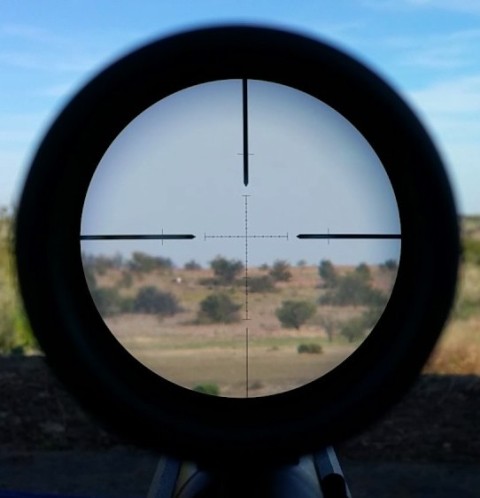Choosing the suitable common types of tents is one of the most crucial steps to prepare for your camping trips. What are the differences between them and which one is perfect for your upcoming trend? Look through some different types of tents below.
Dome tents
Dome tents are the most common type of tent, with two poles crossing over each other that meet in the middle of the tent, forming two semi-circles running across the tent body. This tent shape creates a higher center point compared to other types of tents, which gives you sufficient decent spaces that are suitable for two to eight people. Due to its design, water slides off the top of the tent.
- Water-, UV-, and mold-resistant canvas: The canvas used in this affiliate website’s product is designed to withstand various weather conditions, making it highly durable and long-lasting.
- Multiple size options: With three different sizes available, you can easily select the one that best suits the size of your camping group, ensuring everyone has enough space.
- Built-in stove jack: Including a stove jack allows convenient cooking inside the tent, even in cold or wet weather conditions, providing added comfort and versatility.
- Galvanized-steel center pole: The tent’s center pole, made from galvanized steel, enhances its durability and enables it to withstand harsh weather, ensuring stability and safety.
- Ample natural light and ventilation: The large windows around the tent’s perimeter and roof vents ensure sufficient light and proper air ventilation, creating a comfortable and refreshing environment.
Requires flat ground for setup: The tent must be erected on a flat surface, limiting its placement options and potentially causing inconvenience in certain camping locations.
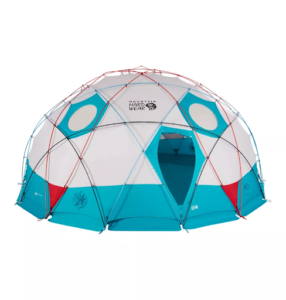
Pros:
- Easy to pitch
- Breathable
- Lightweight
- Various sizes
- Good in rain and wind, especially bad weather
Cons:
- Mudroom vestibules are not guaranteed.
- Limited interior space
Tunnel tents
Tunnel tents are quite similar to dome tents, however the poles of the tunnel tents are curved in a way that creates a tunnel-like structure. Unlike dome tents, tunnel tents have poles running on the exterior of the tent body and consistent overhead height. This type of tent provides more liveable space for larger groups or families to enjoy a camping trip together.
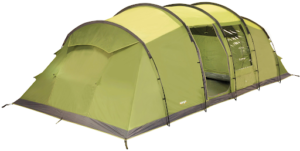
Pros:
- Have multiple rooms
- Good headroom
Cons:
- Heavy and bulky
- Heavy winds can collapse it
- Ventilation is limited in the center of the tent
Rooftop Tents
This tent is sized to the rooftop of a SUV or 4×4, which is suitable for people who are road tripping on their cars. Despite being small, they are cabin-shaped tents that can be pitched quickly and easily. Most cars have roof bars that can handle 4 people at once, but you definitely need a ladder to access the tent.
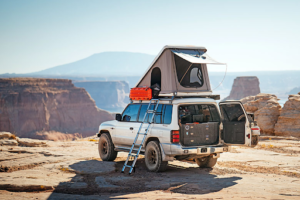
Pros:
- Have mesh doors and windows
- Free-standing
- Flat-sleeping surface
Cons:
- Easily blow away
- Have to get in or get out through a ladder
- Bad in windy weather
Cabin Tents
Cabin tents are the perfect choice if you’re finding affordable tents for family camping. They have lightweight aluminum poles and waterproof canvas, polyester or nylon walls to build a cabin-like frame. Cabin tents can be divided into multiple rooms to create more privacy.
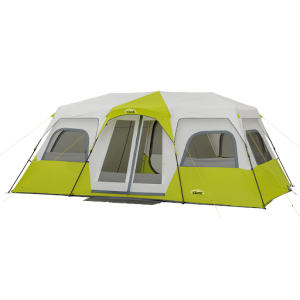
Pros:
- Enough headroom for many people to stand comfortably
- Can contain up to 10 people
- Affordable
- Multiple rooms
Cons:
- Not free-standing
- Fall apart easily, especially in bad weather
- Heavy and bulky
Inflatable or air tents
This is a relatively latest advanced tent type. They are completely poleless, inflatable tents are made of hollow panels. These panels are filled with air using a pump, adding a few tent pegs on the guy lines to pitch your tent.
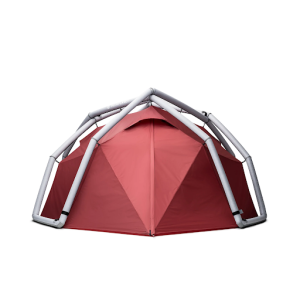
Pros:
- Easily pitched, suitable for beginner campers.
- Spacious rooms with good headroom for storage and campers.
Cons:
- Need to bring a pump to set up the tent
- Quite expensive
Canopy tents
Canopy tents are used as protection for hot sun or sudden rainstorm, and unsuitable for everyday or overnight camping. They provide spacious headroom and open sides for many people to gather.
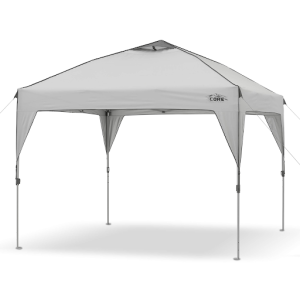
Pros:
- Withstand wind and bad weather
- Waterproof
- Can be set up quickly
Cons:
- Not suitable to be your main tent
- No side protection
Multi-room tents
Although with a tunnel-like shape, you can have vestibules if you consider multi-room tents. This spacious tent can contain 8 to 10 people in four segments in one tent, specially designed for groups that want some privacy.
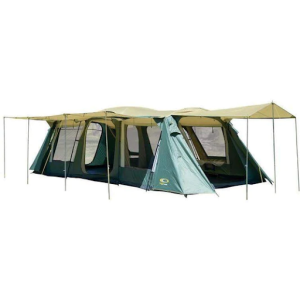
Pros:
- Internal dividers provide more privacy
- Have spacious headroom
Cons:
- Setting-up process is time-consuming and difficult
- Quite expensive
Suspended tents
Suspended tents are narrow and streamlined, might be suitable to be suspended up into the treetops or high over a summit. If you want a new experience, try a suspended tent, although they are often smaller and tight than normal tents.
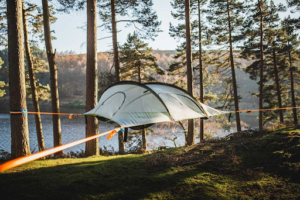
Pros:
- Hold upwards of 400 pounds
- Have mesh doors for you to gaze the beautiful landscapes
- Thick and durable
Cons:
- Heavy weight
- Being suspended
Beach tents
If you go to the beach and want to experience sleeping in the sound of waves with the beautiful beaches in front of your eyes, find a beach tent. This type of tent usually includes UV protection to protect you from the sun’s burning rays. You can also gaze at the beauty of the beach but still sheltered in this beach tent.
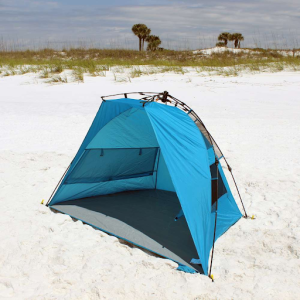
Pros:
- Protect you from sunburnt
- Included floor enables you to sit comfortably
- Contain up to 6 people
Cons:
- Cannot withstand strong winds
- Have a lot of poles, which complicate the set up
Bell tents
How about a glamping trip? This is when you use the bell tent. The canvas base makes it more appealing, while some glamping tents even have wood-burning stoves inside.
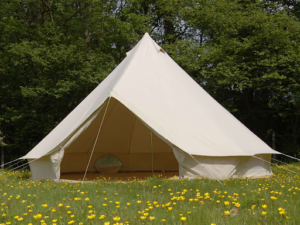
Pros:
- Insulate the temperature, especially in winter
- Appealing
Cons:
- The central pole limit rooms inside
- Quite expensive
Geodesic or Semi-Geodesic Tents
Geodesic or Semi-Geodesic tents are the improved version of dome tents, which have many pole criss-crosses to increase durability in bad weather. The difference between these two types is that semi-geodesic tents have fewer poles, which is why they are more lightweight than geodesic tents. As they focus on stability and strength, this type of tent is suitable for camping in wilderness or harsh environments.
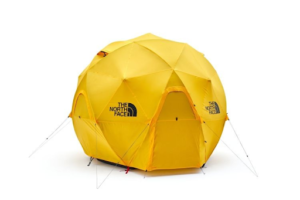
Pros:
- Various sizes
- Tall ceilings enables spacious headrooms
- Withstand wind and inclement weather
Cons:
- Quite expensive
- Geodesic tents are quite heavy
Pop-up Tents
Just like their names, this type of tent is super quick and super easy to set up. As soon as you open the tent, it will instantly pop into shape. Pop-up tents are ideal for summer camping because they’re lightweight and inexpensive, with a containability of 6 people and large groups.
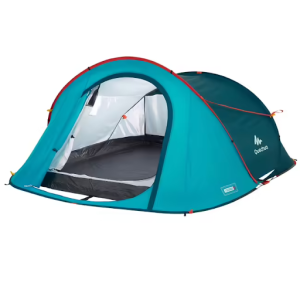
Pros:
- Lightweight, thin, portable
- Spacious room
- Affordable
- Quick and easy to use
Cons:
- Cannot withstand harsh weather or wilderness
- Easily-blown by strong winds
Teepee/Pyramid Tents
This basic type of tent has one pole in the center and a distinct triangular shape. Although it is lightweight, the center pole makes the sleeping area kinda awkward. The interior space is also limited due to slanted walls.

Pros:
- Lightweight
- Can use trekking pole to pitch
- Basic
Cons:
- Unstable
- Limited to condensation
- Most of them have no flooring
A-Frame/Ridge Tents
With a simple design of an A-shape, it has two poles that support the front and back of the tent. They are often connected by a central ridgeline pole with slanted walls. Because they are heavy to pack, A-Frame tents are ideal for fixed camping.
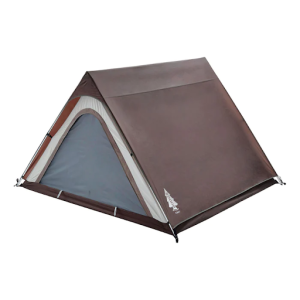
Pros:
- Ultralight designs
- Can use trekking poles to pitch
Cons:
- Limited to condensation
- Hard to pitch
- Limited headroom
Bivy Sacks
Bivy tents are designed as emergency shelters, which are ideal for adventurous campers or hikers who don’t want to carry much weight as they are lightweight and easy to pitch. The most outstanding benefit of this tent type is ventilation and minimalistic, especially for single-person.
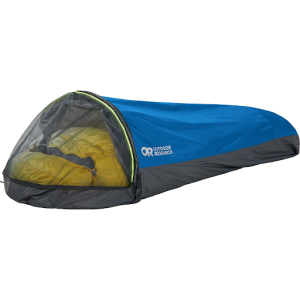
Pros:
- Portable in your bag
- Quick and easy to set up
- Ventilation enables you to breath easily and sleep comfortably
Cons:
- For one person only
- Quite narrow, no headroom

